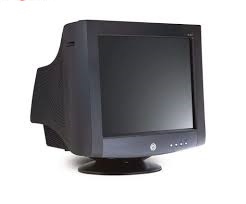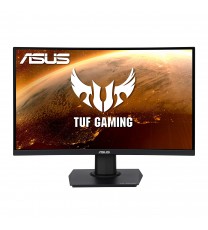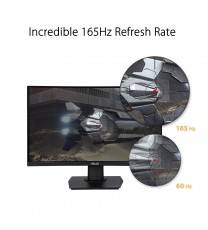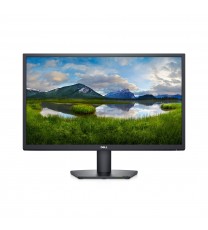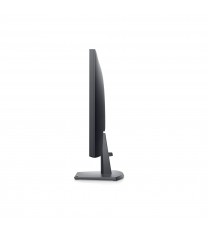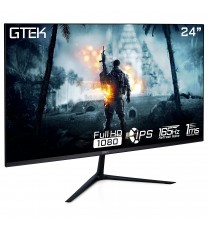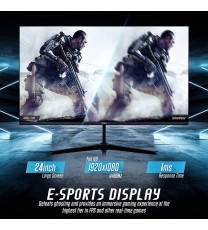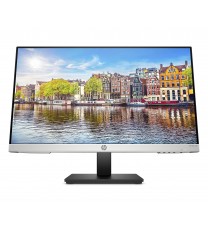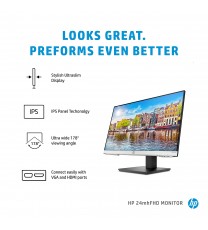Monitors & Projectors
Monitors: Depending on what you plan to use your PC for, you could need a very specific type of display. Gamers looking to get the best performance out of their PC will always want high-refresh rates for the smoothest gaming experience possible. Designers and professionals will often utilize beautiful IPS displays with true-to-life colors that jump off the screen. Let’s take a closer look at the most common uses for monitors and the best types of monitors to buy by activity
- Home and Office
- Mostly monitors and laptop screens are designed for everyday use and standard professional or academic tasks. These entry-level monitors typically have limited connection types and lower overall resolutions. This is because most entry-level computers lack the power to utilize higher resolutions that can require specific connection types. Almost every modern monitor is going to be more than capable of handling standard home and office tasks.
- Gaming
- Depending on the power of your gaming PC, the monitor you choose can significantly impact the performance of the game. Mid-range gaming builds can get by fine with entry-level monitors—because while they have the power to play modern games, they lack the specialized hardware needed to game at HDR resolutions or high frame rates. However, high-end gaming computers are perfect for 1440P or even 4K displays, because powerful dedicated GPUs are designed to support such features as 144Hz refresh rates or 1440P resolutions.
- Professional
- Photographers and graphic designers require monitors that are as color accurate as possible. When creating media that will be published digitally or in print, ensuring your content will look how you intend is crucial. Visual media-based professionals most often use what is called IPS displays. These monitors have slower refresh rates and resolutions than high-end gaming monitors. However, they can cost just as much or even more. Read below for more information on IPS displays.
|
|
|
|
Very old technology, rarely seen today, CRT monitors were the kings of the 90s and early 2000s. These bulky and often loud displays used the same technology as TVs of the era. As a result, they are not ideal for use with computers today. Some offices may still use CRT displays, but gaming or doing any kind of content creation on a CRT would not be recommended. | Along with LED, LCD is the most common type of monitor you will find available currently. LCD monitors consist of two panes of glass with liquid in between and thousands of rows of pixels to organize said liquid. This older technology tends to make the monitors bulkier, and the hazardous liquid within the device creates problems for users when trying to dispose of the device. LCDs also rarely go past 1080P resolution. That said, they are a cheap alternative to LED and other monitors. | While LED monitors are technically still LCD, how the device creates images is different. To put it plainly, LED displays are brighter and have an overall longer lifespan than older LCD monitors. The same technology that boasts more brilliant colors also makes the possible form factor of the monitor much smaller. One known problem with LED monitors, however, is that they are susceptible to image burn if left on the same image for too long. This can result in a transparent copy of a specific image staying present on the screen at all times. To avoid this, set a screen saver or an auto screen turnoff after a certain time period. | OLED monitors are flat computer displays which consist of pixels made from OLEDs (Organic Light Emitting Diodes) rather than liquid crystal filled units. Unlike LCD (Liquid Crystal Display) technology, OLED does not require backlighting to function. The principle of this technology is that when current flows between a cathode and an anode, an emissive layer of organic molecules (e.g., polyaniline, green in diagram) sandwiched between these electrodes can become illuminated (electroluminescence). For this to happen efficiently, a layer known as the conductive layer (orange in diagram), made up of organic plastic molecules such as polyfluorene, lies between the emissive layer and the anode. The anode is positively charged and therefore draws electrons from the conductive layer, leaving the conductive layer with a positive charge that draws electrons from the emissive layer. Light is emitted as a by-product, in a process known as electro phosphorescence. |
| Introduced in 1987 by IBM | Introduced in 1990 (Gen1) | The first true LED screen was developed by James Mitchell in 1977 | Introduced in 1997 |
Refine Search
ASUS TUF Gaming 23.6
$239.99
Product Information: ASUS TUF Gaming 23.6" 1080P Curved Monitor (VG24VQE) - Full HD, 165Hz, 1ms, Extreme Low Motion Blur, Adaptive-Sync, FreeSync Pre..
Dell SE2422HX 24 Inch FHD (1920 x 1080p) Computer Monitor
$284.99
Product Information: Dell SE2422HX 24 Inch FHD (1920 x 1080p) Computer Monitor - Comfortview (TUV-Certified), 75Hz Refresh Rate, Anti-Glare - BlackPE..
GTEK 165Hz Gaming Monitor, 24 Inch Frameless Display Full HD
$149.99
Product Information: GTEK 165Hz Gaming Monitor, 24 Inch Frameless Display Full HD 1920 x 1080P, IPS Technology 1ms, Supports 144Hz HDR, FreeSync, D..
HP 24mh FHD Monitor - Computer Monitor with 23.8-Inch IPS Display (1080p)
$259.99
Product Information: HP 24mh FHD Monitor - Computer Monitor with 23.8-Inch IPS Display (1080p) - Built-In Speakers and VESA Mounting - Height/Tilt ..

